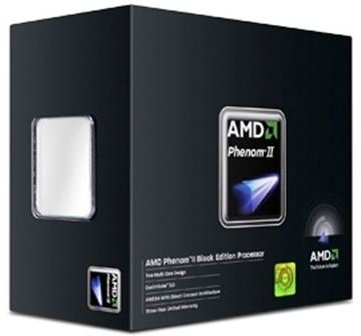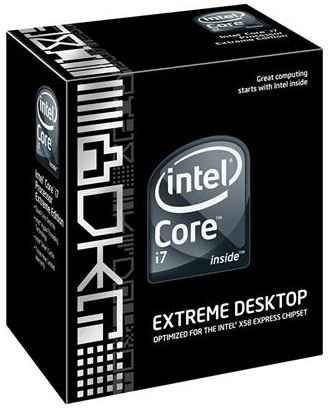What is the Fastest CPU?
Looking For The Best?
Thanks to falling netbooks and a slow economy, the market for desktop CPUs has become more oriented on value than ever before. Consumers are looking to get in on the best deals and are snapping up low- and mid-range processors which provide more than adequate performance for the average modern computer user. As a result, the fastest processors have been given surprisingly little attention, even from enthusiasts. Even gamers are having a hard time justifying the purchase of more than a Core 2 Duo.
But there still are, and always will be, some users who demand the quickest processors available. Some desire speed for its own sake, but others require it to increase their productivity. Fast processors that can go through tasks with extreme speed can increase the amount of work the user can accomplish in a certain time frame, and to a dramatic extent if they run demanding software, such as that used for various forms of modelling. For business owners and freelance professionals this is critical.
No matter what you demand of your computer or why you need the speed, the three processors below are the best you can buy today.
Core i7 Extreme Edition 965 Nehalem 3.2Ghz Quad Core
Let’s start at the top. If you’ve been paying attention to processors, then you know that Nehalem is the best thing since sliced bread. Intel already had a bit of a performance lead of AMD with its Core 2 series, and the new Nehalem architecture takes that lead to new heights. Ironically, they do this by implementing some features that AMD has been using for years. The memory controller is integrated for the first time, and Nehalem adds a QuickPath Interconnect which operates similarly to AMD’s Hypertransport.
The result of these new features is massive improvements in performance. The performance improvement Nehalem provides over the Core 2 Quads is larger than the performance increase any architecture in recent memory has provided in comparison to its predecessor. At least, that is, when you use it for tasks which capitalize on its strengths and make use of all four cores and eight threads. For example, when encoding a x264 HD video, the performance of the Core i7 965 Extreme Edition is an average of 40% faster than the performance you can squeeze from a Core 2 Extreme QX9770. In fact, the only setup that can outpace the Core i7-965 is a Skulltrail platform running two Core 2 Extreme QX9775s. This impressive increase applies to a variety of 3D rendering, video editing, and professional/scientific applications.
It does, not, however, apply to programs that do not make much use of multi-threading. Games are a great example. In Crysis the Core i7 965 provides less than ten more frames per second than a Core 2 E8600. Yes, the Core i7 965 is technically faster. But even in an article such as this one, its impossible not to comment on the fact that the Core i7 965 costs nearly a thousand dollars. Make no mistake - if you need the fastest performance you can get and money is no object, then the Core i7 965 is your best bet. The slower Nehalems are also worth a look, however, as they provide 90% of the performance at less than 50% of the price.
Core 2 Duo E8600 3.33Ghz Dual-Core

Core 2 Duos are not nearly as cool as they were a year ago, when the E8xxx series was new and the Core 2 Duo E8400 was the people’s champion of affordable, high performance processors. Nehalem has come in and laid claim to many performance crowns, and those looking at new computers are having a hard time justifying the purchase of socket LGA775 systems. Even so, the E8600 is worth consideration. It is the fastest Core 2 Duo ever, excluding the Extreme Edition processors - and given its stock clock speed of 3.33Ghz, it can even challenge those Extreme processors on certain benchmarks.
Gamers should pay particular attention to this processor. Mutli-threading is slowly gaining support among game developers, but support for it is still weak. It makes more sense to buy a dual-core processor with an extremely high clock speed than it does to buy a low-clock quad corre processor. As nice as Nehalem is, only the Core i7 965 has a chance of regularly outrunning the E8600 by any noticeable margin. And even then the performance difference is typically less than 10%.
Of course, as mentioned, the fact that the E8600 is a LGA775 processor is its achilles heel. It is difficult to justify buying a LGA775 processor these days, nevermind one that costs around $270 dollars - which, by the way, is nearly as much as you’d pay for a Core i7 920. That said, the popularity of the LGA775 socket means that many gamers probably already have a LGA775 mobo in their machines. If you do, and you’re looking to increase your gaming experience as much as possible without getting a new board, then the E8600 is the top choice.
Phenom II X4 955 3.2Ghz Quad-Core

In the past, it has been common courtesy to include a token AMD processor in every run-down of new CPUs. Sure, the Phenoms weren’t stellar performers, and the cases where they matched up well to Intel’s processors were rare. But some people - myself included - have an inexplicable desire to support the underdog, and AMD’s chipsets have been preferable to Intel’s since the coming of the 780G. But these days, things have changed. The Phenom II has arrived and, to everyone’s surprise, it’s kicking out great numbers. The Phenom II X4 955 is not a token recommendation aimed at AMD enthusiasts. It is a sincerely fast processor that is a good choice for nearly anyone.
The Phenom II X4 955 is a Quad Core processor running at 3.2Ghz. That is an extremely high clock speed for a quad core, as high as the Core i7 Extreme Edition above, and that bears fruit in gaming performance. Although quad cores are classically considered to be poor choices for gamers, the 955 is generally on par with the Core 2 Duo E8600. Performance tends to vary depending on the game - those that do hardly any multi-threading lean towards the E8600, while those that can use more than two cores lean towards the X4 955. And when it comes to programs that traditionally favor quad core processors, like the video editing and 3D rendering, the 955 trounces the E8600. It encodes high-def video nearly twice as quickly as the E8600, and is usually 50% quicker in 3D rendering benchmarks. When running applications which make good use of multi-threading, it is simply no contest.
The 955’s speed alone is intriguing, as it means that people who both play games and use their desktop for more productive endevouers can have the best of both worlds. Yet it is even more interesting given that the price tag attached to this high-performance CPU is a mere $245 dollars. Thanks to its competitive pricing, the Phenom II X4 955 is the best choice of high-performance processor for those building a new PC who are not interested in the Core i7 platform.
